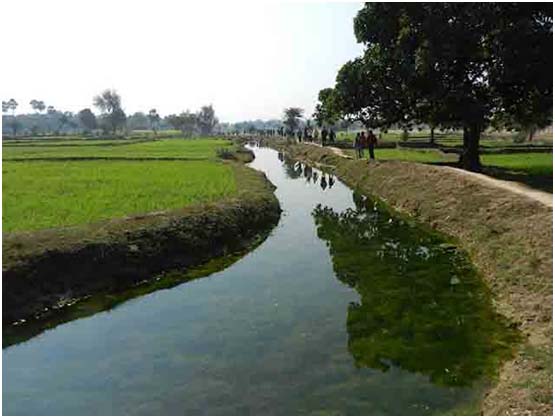Bihar
Videos: Resurgence of the ahar pynes - Magadh Jal Jamaat helps revive 2000-year old flood water harvesting systems in Gaya, Bihar
Posted on 13 Feb, 2013 10:34 AMMagadh Jal Jamaat, a loose network of progressive individuals in Gaya has been successfully able to revive over a dozen abandoned water sources and have instilled in people the need to create, clean up and conserve several lakes and ponds in the region.
Provision of safe drinking water in rural Bihar: Paper in the Journal of Water, Sanitation and Hygiene for Development
Posted on 10 Feb, 2013 11:21 AMA practical paper that addresses vital gaps in water quality monitoring and institutional weakness, focuses on the role of access and interventions in severely contaminated areas and calls for a drastic shift in the monitoring and intervention strategy to address safe water provision for rural Bihar
Towards self-reliance and access to safe drinking water and secure sanitation in north Bihar: A report by Megh Pyne Abhiyan
Posted on 27 Jan, 2013 11:48 AMAhar pynes, traditional flood water harvesting systems can help revive agriculture in south Bihar
Posted on 26 Jan, 2013 07:48 PMAhar pynes are traditional floodwater harvesting systems indigenous to South Bihar [1], and have been the most important source of irrigation in this region.
Ahars are reservoirs with embankments on three sides and are built at the end of drainage lines such as rivulets or artificial works like pynes. Pynes are diversion channels led off from the river for irrigation purposes and for impounding water in the ahars. It is mostly to the credit of these that paddy cultivation has been possible in this otherwise relatively low rainfall area, when compared to North Bihar. The system attained its highest development in the district of Gaya [2].
This article provides an account of the ahar-pyne systems of South Bihar and the need to build organizational and institutional capacities of civil society and government agencies to undertake ahar pyne renovation and management.

Ahar Pyne system in Gaya, South Bihar
Image courtesy: Hindi Water Portal
Increasing rice yields and saving water: Lessons for policy and practice: Bi monthly update from SRI-India Network for November - December 2012
Posted on 11 Jan, 2013 07:50 AMIncreasing rice yields and saving water: Lessons for policy and practice - The System of Rice Intensification (SRI)
River and people on collision course
Posted on 05 Oct, 2012 05:11 PMThis bilingual book written in Hindi and English appearing side-by-side titled “Bagawat par majboor Mithila ki Kamla nadi” and “Kamla: River and the people on collision course” respectively attempts to study the irrigation and flood control schemes that were taken up in the Kamla basin following independence and depicts how people have been left in a blind alley.
Annual Health Survey (AHS) bulletins 2010-2011- Data on health aspects of nine states by Ministry of Home Affairs
Posted on 03 Oct, 2012 07:49 PMThis data sheet on health aspects by Ministry of Home Affairs provides district wise (rural and urban) statistics of nine Indian states on the following issues:
Caste discrimination in disaster situations in India - Reports by National Dalit Watch
Posted on 21 Sep, 2012 11:00 AMThe National Dalit Watch (NDW), an effort spearheaded by the National Campaign on Dalit Human Rights has prepared a number of reports on rampant caste discrimination and the urgent need for protection of human rights, particularly Dalit human rights during disaster situations.
"Crop failure resulting from failed monsoon drives farmers to suicide in Saurashtra" - Roundup of the week's news (20-26 August 2012)
Posted on 28 Aug, 2012 11:57 AMNear complete crop-failure drives farmers to suicide in Saurashtra, Gujarat